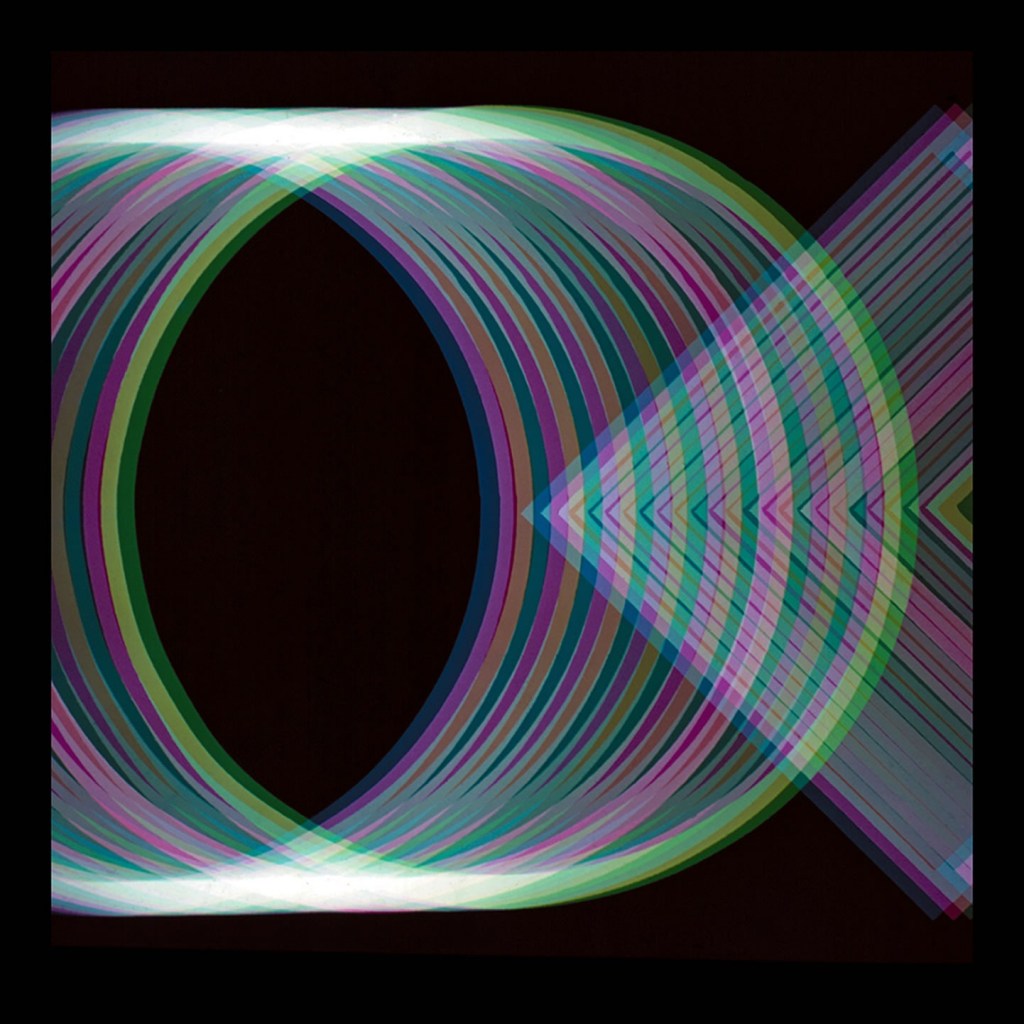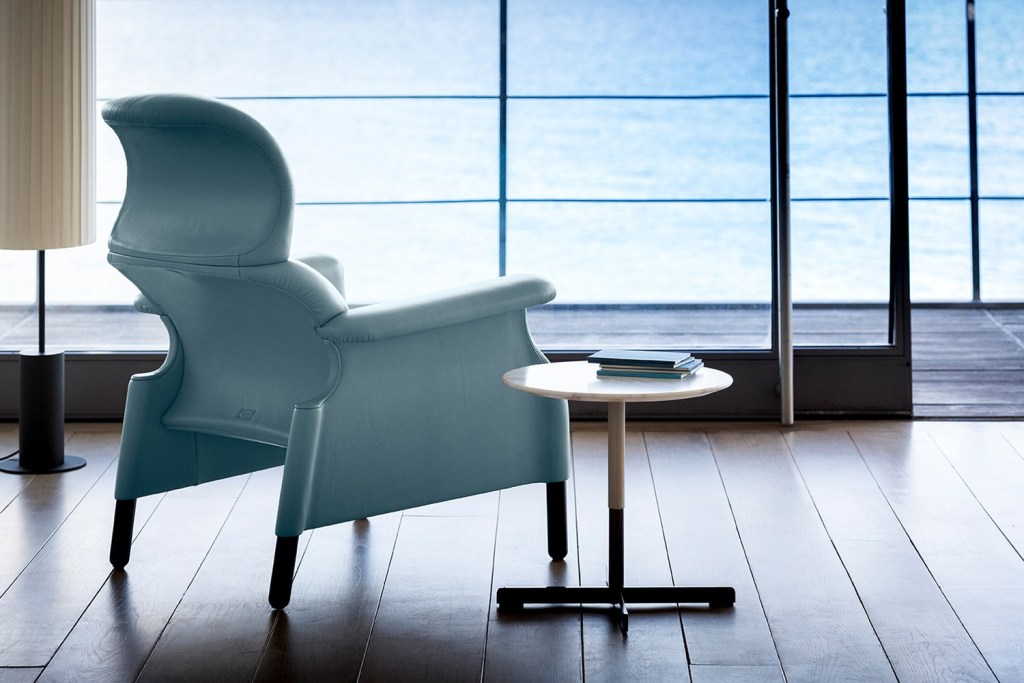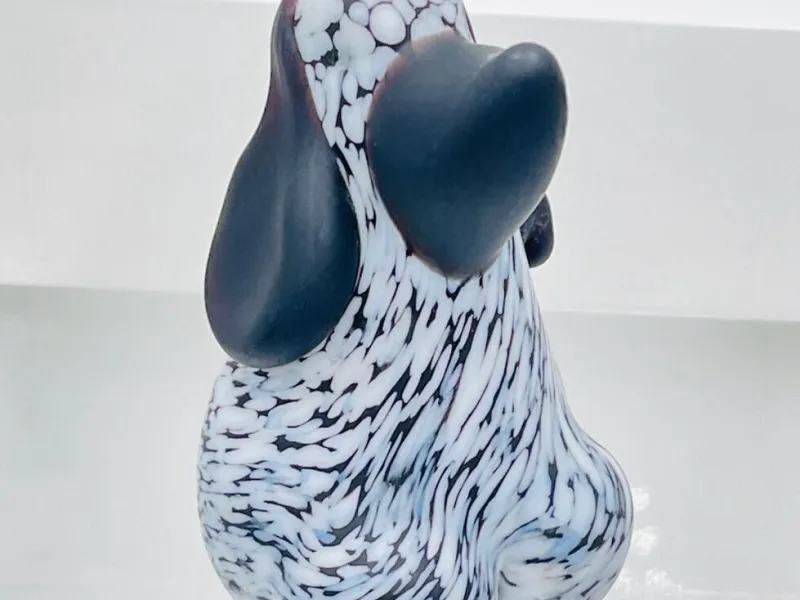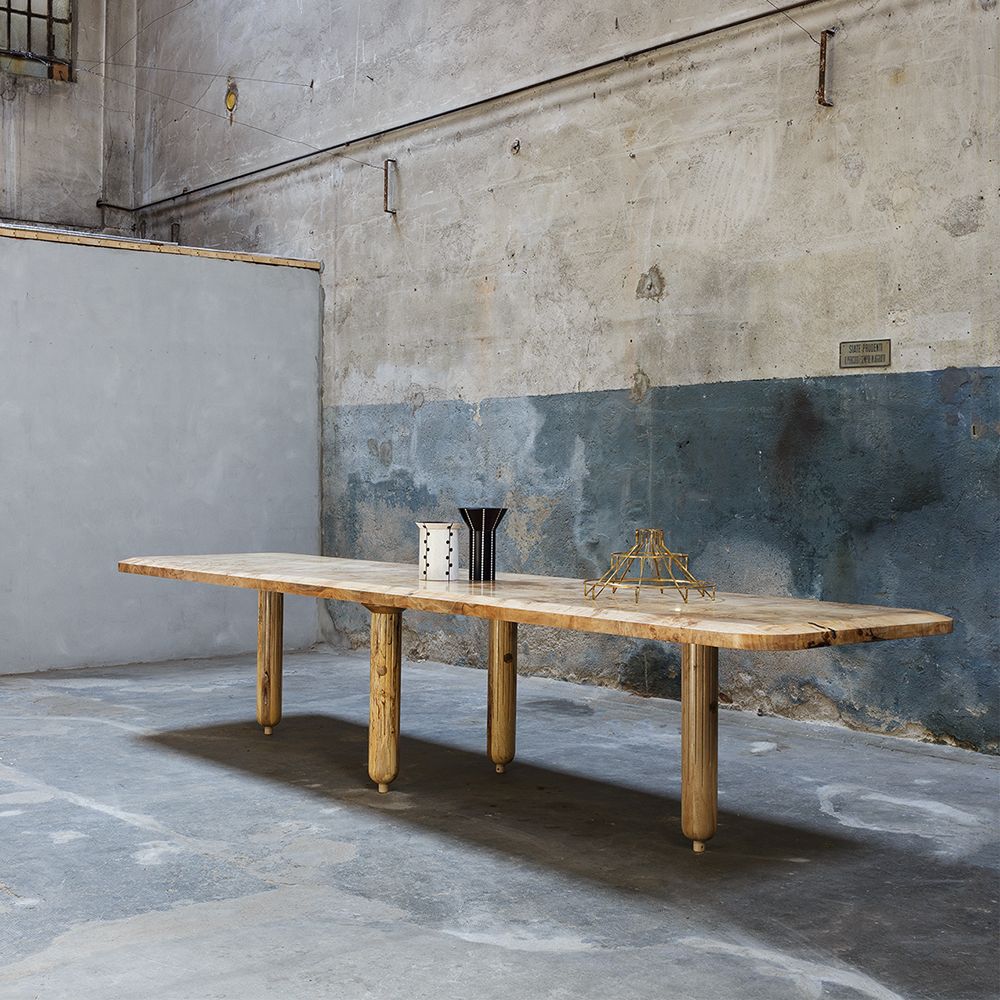Gae Aulenti (1927-2012) was an influential Italian architect who worked in various fields, including industrial and exhibition design, furniture, graphics, stage design, lighting, and interior design.
Early Life and Education
Gaetana Aulenti (Gae, as she was known, is pronounced similarly to “guy”) was born in Palazzolo dello Stella (Friuli) and studied architecture at the Milan School of Architecture of the Polytechnic University, graduating in 1954 as one of two women in a class of 20.
She grew up reading books and playing the piano. She told The New York Times that she chose architecture over becoming “a nice society girl,” despite her parents’ wishes. She quickly joined the staff of Casabella, a design journal, where she joined her contemporaries in rejecting the architecture of masters such as Le Corbusier, Mies van der Rohe, and Walter Gropius. They coined the term “Neo Liberty” to describe a movement that supported traditional construction methods combined with individual artistic expression.
Biography
From 1955 until 1961, she was a member of the Movimento Studi per |’Architettura (MSA) (Movement for Architectural Studies).
She was a member of the Casabella-editing continuity department from 1955 until 1965 when she was a member of the Emesto N. Rogers architecture group. She joined the ADI (Associazione per il Disegno Industriale) in 1960 and served as vice president in 1966. She was a professor at Politecnico di Milano from 1964 until 1969. In the late 1950s, she became a proponent of the contentious Neo-Liberty style, as evidenced by her 1961 Poltronova Sgarsul bentwood rocking chair. She worked as a lighting designer for Francesconi, Martinelli, Candle, Artemide, Kartell, and Stilnovo starting in 1964. Olivetti in Paris in 1967, Buenos Aires in 1968, Knoll in Boston in 1968, New York in 1970, and Fiat in Turin, Brussels, and Zurich in 1970—71 all had showrooms designed by her.
Aulenti began her career as an architect and designer in 1965. Since 1974, she has been a member of Lotus International’s executive committee. She was a member of the editorial boards of numerous of the company’s architectural publications. Her architecture and industrial design business was in Milan. She worked with theatre director Luca Ronconi for his Laboratorio de Luca Ronconi in Prato (Italy) on stage designs for operas such as L’Anitra Selvatica in Genoa and Wozzeck at La Scala in Milan, beginning in 1975. She worked on research with Prato’s Laboratorio di Progettazione Teatrale members from 1976 to 1979. She was hired to design the architectural interiors of the Musée d’Orsay in Paris in 1980. She worked on a project for the Centre Georges Pompidou’s Musée d’Art Moderne in Paris.
Furniture
Her designs were Martinelli Luce’s Pipistrello telescoping table lamp, Knoll’s Jumbo coffee table, Zanotta’s Faretti lighting line, and others. Knoll’s 1975 furniture series, Artemide’s 1975 Alcindo and Patroclo table lamps, Cleto Munari’s 1980 coffee service, Fontana Arte’s 1980 Tavolo with ruote table, Zanotta’s Cardine sawhorse table, 1983 Zanotta’s Appia table series (706), Fusital hardware-fittings (1985), and Maxalto’s 0086 sofa (1986).
Style
Aulenti worked in Italy during the postwar period, doing works influenced by various styles and influences. She believed that the occupants were what made a room a room. Thus, she always wanted the room’s attention to be on them. Vogue described her as stating, “She had a modest style.” “If somebody asks me how to design a home, I tell them to have nothing but a few shelves for books and a few pillows to sit on. Then it’s time to stand up to the fleeting, to reject transient fads, and to reconnect to lasting ideals.”
Recognition
- At the 1964 Milan Triennial, Aulenti won the Grand International Prize for her piece in the Italian Pavilion. Her piece was a room with mirrored walls with cutout silhouettes of women inspired by Picasso. It was entitled “Arrivo al Mare”. She also served on the Executive Board for the Triennial from 1977- 1980. In 1991, she was awarded the prestigious Praemium Imperiale.
- Ubi Prize for Stage Design, Milan, 1980
- Architecture Medal, Academie d’ Architecture, Paris, 1983
- Josef Hoffmann Prize, Hochschule fur Angewandte Kunst, Vienna, 1984
- Chevalier de la Legion d’ Honneur, France, 1987[5]
- Commandeur, Order des Artes et Letters, France, 1987
- Honorary Dean of Architecture, Merchandise Mart of Chicago, 1988
- Accademico Nazionale, Accademia di San Luca, Rome, 1988




Sources
Byars, M., & Riley, T. (2004). The design encyclopedia. Laurence King Publishing.
Wikipedia contributors. (2021, September 6). Gae Aulenti. In Wikipedia, The Free Encyclopedia. Retrieved 05:38, September 18, 2021, from https://en.wikipedia.org/w/index.php?title=Gae_Aulenti&oldid=1042766920
More Italian Designers
Bormioli Luigi: The Evolution of Italian Glassware Excellence
Bormioli Luigi, renowned for Italian glassware since 1825, combines tradition with innovation, offering luxury products like the Sublime Carafe, showcasing elegance and sustainability.
Keep readingAlessandro Becchi: Icon of Italian Furniture Design
The Anfibio Sofa, designed by Alessandro Becchi in 1971, exemplifies Italian radical design with its multifunctional, sculptural form, merging comfort and versatility in furniture.
Keep readingAlberto Marangoni: Pioneer of Interactive Italian Design
Alberto Marangoni, a pivotal designer, co-founded Gruppo MID, influencing interactive art and urban design, merging aesthetics with functionality in the 1965-2014 series.
Keep readingLodovico Meneghetti: A Key Figure in Neo-Liberty Design
Lodovico Meneghetti (1926–2020) was a pivotal Italian architect known for his Neo-Liberty contributions, blending historical influences and craftsmanship within modern design.
Keep readingNeo-Liberty: Reviving Craft and Ornamentation in Italian Design
Neo-Liberty emerged in the late 1950s as a reaction against Modernism, emphasizing ornamentation and craftsmanship through iconic designs like the Sanluca and Cavour chairs.
Keep readingArchimede Seguso: Icon of Murano Glass Artistry
Archimede Seguso, a pivotal 20th-century Murano glassmaker, blended tradition and innovation, creating timeless works characterized by elegance and artistic expression, influencing global design.
Keep readingMarcello Nizzoli: Pioneer of Italian Industrial Design
Marcello Nizzoli (1887–1969) was a key modern Italian designer, known for his iconic Olivetti products, merging aesthetics with functionality, and influencing industrial design’s evolution.
Keep readingZanotta: Pioneering Italian Furniture Designs Since 1954
Zanotta, established in 1954, is acclaimed for innovative Italian furniture that combines art and functionality, collaborating with diverse designers and producing iconic, historically significant pieces.
Keep readingUnderstanding the Different Types of Lamps for Your Home: A Guide
Lighting enhances home design by influencing ambiance and functionality. Five key lamp types—suspension, ceiling, wall, table, and floor—serve unique purposes in various spaces.
Keep readingPietro Russo: A Design Journey Through Art and Craftsmanship
Pietro Russo, an accomplished designer, combines traditional craftsmanship with contemporary elements, creating functional, narrative-rich interiors and products that resonate with modern sensibilities.
Keep readingTramonto a New York by Gaetano Pesce: A Design Icon Capturing New York’s Skyline
The “Tramonto a New York” sofa by Gaetano Pesce features skyscraper designs symbolizing the skyline’s sunset, crafted sustainably in a limited series of 50 pieces.
Keep readingPiero Fornasetti’s Gilded Illusions: A Study in Black and White
Piero Fornasetti’s porcelain plate, crafted in the 1950s, fuses op-art influences with gilded details, illustrating his transformative artistic vision and playfulness in decorative design.
Keep readingMario Bellini’s Visionary Approach to Consumer Electronics
The Condor Samo 12 portable television, designed by Mario Bellini in 1968, embodies vibrant design, functionality, and Pop Art influence, marking a cultural shift in consumer electronics.
Keep readingTimeless Elegance: Tito Agnoli’s 1962 Rattan Masterpiece – The Armchair P3
The Armchair P3, designed by Tito Agnoli in 1962, features a rattan weave and tubular steel, showcasing mid-century modernity through comfort, craftsmanship, and material integration.
Keep readingThe Artistic Journey of Enzo Bioli: A Confluence of Design and Craftsmanship
Enzo Bioli, an influential Italian designer, crafted ceramic vases and furniture with a perfect blend of functionality and aesthetics, leaving a lasting impact on design education and industry.
Keep readingCarlo Giuliano Victorian Gold Charm Bracelet with Heart Pendants
Carlo Giuliano’s 19th-century necklace, blending Italian craftsmanship with British elegance, features coral cameos and woven gold, symbolizing nature’s beauty and life’s cyclical nature.
Keep readingCelebrating Iconic Design: The Supermoda Stripes Sofa by Andrea Branzi
The Supermoda Stripes Sofa, born from 1960s innovation, reimagined by Andrea Branzi, offers playful versatility and contemporary flair, inviting flexible living.
Keep readingItalian Countryside Square Casserole: A Symphony of Design and Functionality
The Italian Countryside Square Casserole embodies Italian elegance and practicality. Crafted from high-quality stoneware, it offers durability and functionality for versatile cooking and baking.
Keep readingSublime Carafe with Cork Designed by Luigi Bormioli: A Synthesis of Elegance and Innovation
Luigi Bormioli’s Sublime Carafe: a blend of historic craftsmanship and modern innovation, offering eco-friendly elegance and enduring Italian tradition.
Keep readingPier Luigi Nervi: Minimum Series
The monograph “Pier Luigi Nervi: Minimum Series” offers a comprehensive exploration of the influential architect and engineer’s works, providing insights through primary sources and visual interpretations.
Keep readingAnna Gili: A Confluence of Art and Design
Anna Gili, an influential Italian designer, showcases a unique blend of art and functional design. Her global recognition and post-radical approach redefine design norms.
Keep readingCarlo Scarpa: Architecture and Design – Book
Carlo Scarpa: Architecture and Design showcases the iconic architect’s mastery and legacy, inspiring a harmonious blend of tradition and modernity in contemporary design.
Keep readingRobby Cantarutti: A Beacon of Italian Rationalism in Modern Design
Explore the fascinating designs of Robby Cantarutti – the Italian Rationalist. Discover why he is an iconic figure in the architecture and industrial design world and appreciate his blending of functionality and beauty.
Keep readingAnna Castelli Ferrieri: Pioneering Architect and Industrial Designer
Anna Castelli Ferrieri, a groundbreaking architect and industrial designer, co-founded Kartell, revolutionizing the use of plastics in modern design through iconic creations like the Componibili.
Keep readingUnveiling the Artistry of Baldessari e Baldessari
Explore the legacy of Baldessari e Baldessari, founded by the Baldessari siblings–Giulio, Paolo, and Michela.
Keep readingFontana Arte: A Journey Through Glass and Light
Fontana Arte, established in the 1930s by Gio Ponti, is a cornerstone of Italian design. Despite post-war challenges and shifts in ownership, the brand consistently maintains quality and creativity, further enhancing their prestige through collaborations with renowned designers and continuously innovating their product offerings.
Keep readingLeonardo Fioravanti: Master of Automotive Design
Leonardo Fioravanti, a prominent automotive designer, transformed the industry with his iconic creations at Pininfarina and Ferrari, merging beauty and functionality throughout his career.
Keep readingILIO 10 SPECIAL EDITION: Timeless Functionality
Artemide launches the ILIO 10 Special Edition lamp to celebrate the original ILIO’s 10th anniversary, featuring a sustainable shaded metal finish, dynamic light management via an app, and a commemorative laser-engraved signature, signifying the brand’s commitment to design excellence and sustainability.
Keep readingFranco Raggi: A Luminary in Italian Design and Architecture
Franco Raggi, born in 1945, has contributed greatly to the design and architecture fields for over five decades. His designs are celebrated globally, with work showcased in various esteemed institutions. Besides his design work, Raggi has also garnered recognition as a curator and educator.
Keep readingPaolo Buffa: A Maestro of Mid-Century Italian Furniture Design
Paolo Buffa, an influential mid-century furniture designer, merged neoclassical elements with modern aesthetics. His work is highly valued by collectors and museums.
Keep readingMarco Acerbis: The Architect of Versatility in Modern Design
Marco Acerbis, an influential architect and designer, gained invaluable experience at Foster+Partners before establishing his own studio in Italy. His work reflects sustainability and interdisciplinary innovation.
Keep readingBarbara Radice: The Chronicler of Memphis Design
Italian design critic Barbara Radice is renowned for shaping the narrative of the Memphis Group, a 1980s postmodern design collective. Her works, including the influential “Memphis: Research, Experiences, Results, Failures and Successes of New Design,” have provided critical insight into the group’s multidisciplinary output.
Keep readingAldo Rossi (1931 – 1997), Italian Designer and Architect
Aldo Rossi (1931 – 1997) was an Italian architect. He was born and professionally active in Milan.
He is considered by many to be the greatest Italian architect of the second half of the 20th century. His life as an architect began with Gardella and Zanuso.
Keep readingFranco Mirenzi ( b. 1942 ) Italian Industrial Designer
Franco Mirenzi, born in 1942, is an Italian industrial designer known for his furniture, lighting, and hi-fi equipment. His recent work includes the Sealed wall partitioning module.
Keep readingRodolfo Dordoni Designer Italian Architect and All-Rounder
Rodolfo Dordoni, a renowned designer and architect, left a timeless legacy with visionary work in lighting and furniture design. He passed away at 69.
Keep readingMassimo Morozzi (b. 1941) The Visionary Pioneer of Italian Design
Massimo Morozzi, an influential Italian architect and designer, co-founded Archizoom Associati and pioneered innovative furniture design while significantly shaping the Italian design landscape.
Keep readingLaura Griziotti (b.1942) Italian Architect & Designer
Laura Griziotti, Italian architect and designer, born in Seregno in 1942. Studied architecture at Politecnico di Milano and professionally active in Milan. Collaborated with renowned architects and designers.
Keep readingGiorgina Castiglioni Italian Architect and Designer
Giorgina Castiglioni, an influential Italian architect and designer, focuses on bio-ecological architecture, material metamorphosis, and collaborations, winning multiple awards for her innovative designs.
Keep readingAngelo Cortesi: A Visionary Italian Industrial Designer
Angelo Cortesi, an influential Italian industrial designer, co-founded Studio GPI, worked with prestigious clients, received multiple awards, and actively contributed to the design community through ADI.
Keep readingPucci De Rossi: Italian Designer and Sculpture Furniture Trend
Pucci de Rossi, an Italian designer and artist, created visually striking and functional works that referenced Arte Povera and neo-baroque aesthetics through sculpture, furniture, and jewelry.
Keep readingLa Rinascente (1918) Milanese department store
La Rinascente, established post-World War I, significantly influenced Italian design and consumer preferences through collaborations with renowned designers and participation in pivotal design exhibitions.
Keep readingAmbrogio Pozzi: Italian Industrial Designer and Ceramicist
Ambrogio Pozzi, an Italian industrial designer, gained renown for functional redesigns. His works, like the Compact stacking coffee service, earned accolades and widespread acclaim.
Keep readingFranco Deboni: A Luminary in Italian Glassware and Architecture
Franco Deboni, an influential Italian glassware designer, showcased versatility in architecture and design. His work, publications, and curatorial endeavors solidify his lasting impact.
Keep readingGillo Dorfles (1910 – 2018) Italian art critic, painter, and philosopher
Gillo Dorfles (1910 – 2018) was an Italian art critic, painter, and philosopher. He was born in Trieste and active in Milan.
Keep readingLino Tagliapietra (b.1934) Italian Glassworker and Teacher
Lino Tagliapietra, an Italian glassworker and teacher, significantly influenced glassblowing internationally, mentoring many and receiving numerous awards throughout his distinguished career.
Keep readingGino Valle (1923 – 2003) Italian Architect, Designer and Town Planner
Gino Valle (1923 – 2003), an Italian architect and designer from Udine, was known for his Brutalist and Rationalist buildings, automated schedule boards, and industrial designs.
Keep readingMarcello Piacentini (1881 – 1961) Italy’s Fascist Architect
Marcello Piacentini was a prominent Italian Fascist architect, known for his blend of rationalism and neoclassicism, influencing 20th-century architecture through significant projects in Italy.
Keep readingMarilena Boccato Italian Product Designer
Marilena Boccato is a designer from Italy who worked in Treviso and Padua. In 1967, Boccato began her professional career. She collaborated with Gian Nicola Gigante and Antonio Zambusi.
Keep readingGruppo 9999 Italian Architecture and Design Group
Gruppo 9999 was a group of radical architects founded in Florence in 1968 by Giorgio Birelli, Carlo Caldini, Fabrizio Fiumi and Paolo Galli.
Keep readingLivio Castiglioni (1911-1979): Italian Industrial Designer and Lighting Innovator
In 1938, Castiglioni and his brother Pier Giacomo Castiglioni set up a studio with Luigi Caccia Dominioni, which closed in 1940.
Keep reading❤️ Receive our newsletter
Discover more from Encyclopedia of Design
Subscribe to get the latest posts sent to your email.


















































